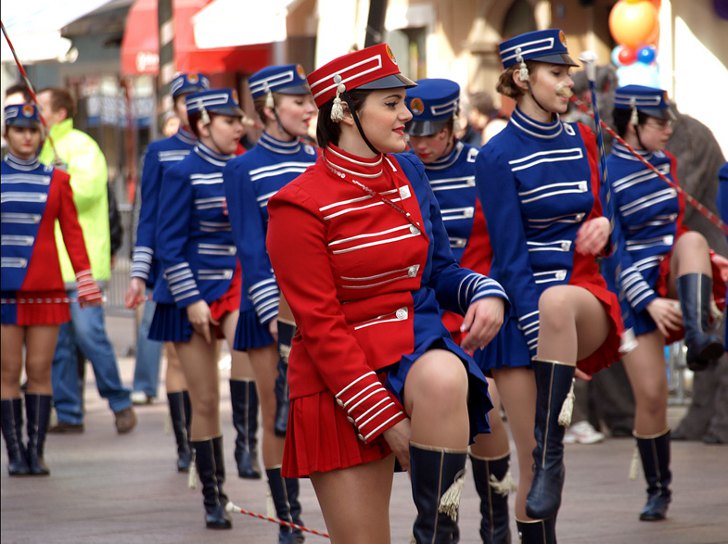Back when Croatia was a part of the Austro-Hungarian Empire, the city of Rijeka was famous for its carnival celebrations. Local carnival parades and balls attracted Austrian and Hungarian aristocrats, German barons and Russian princesses, earls and countesses from all over Europe. The carnival tradition began to dwindle when Croatia became a part of Yugoslavia in 1918. The Rijeka carnival was officially revived in 1982. The first carnival featured only thee performer groups. Today, over 100 groups participate in the carnival procession each year.
The carnival season in Rijeka kicks off with an official ceremony during which the city mayor gives the symbolic key to the city to the festival’s maestro Meštar Toni. On the same day, the Queen of the Carnival is elected. Events preceding the carnival parade itself include a charity ball in the Governor’s palace, a car rally, and a children’s carnival.
The main carnival parade takes place on the Sunday before Ash Wednesday (the first day of Lent), starting at noon. The procession is headed by Meštar Toni, the Queen of the Carnival and the mayor of Rijeka. They are followed by extravagantly decorated floats and numerous carnival groups. Traditionally, the last group to march in the parade are Halubajski zvončari. Zvončari (the bellmen) is an old local folk custom. They are dressed in characteristic costumes including a striped shirt, white trousers, and a sheepskin throw.
The carnival parade features about a hundred groups, so it usually lasts for several hours, ending in front of the city hall where the main stage is located. All groups are greeting by the Queen, the mayor and Meštar Toni. About 100,000 spectators gather to see the parade, standing along its entire route.
The parade is followed by one last event known as the burning of the Pust. Pust is a puppet, often designed after some politician, which is blamed for all the bad things that happened during the previous year. Thousands of people gather at the harbor where a spokesman reads a list of Pust’s sins. Then the puppet is taken to the sea in a boat and burned there.

Photo by Pharmacist’s Daughter




